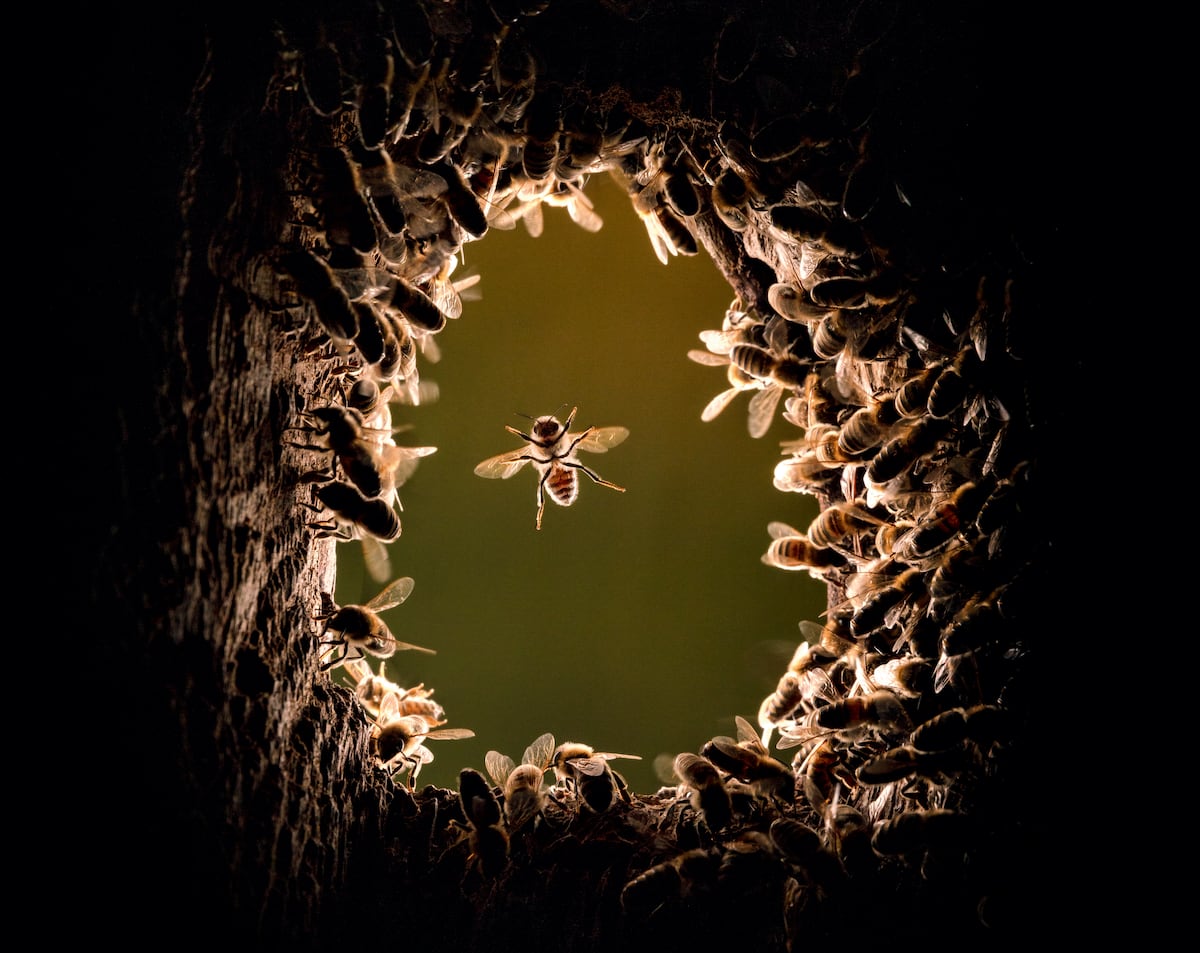
"Of the more than 20,000 bee species that are estimated to exist in the world, none is as well-known as the honeybee, Apis mellifera, which was domesticated by humans millennia ago alongside goats, cows and horses. When we talk about bees, the majority of us think automatically of insects that live in hives that are tended by beekeepers wearing special suits that protect them from stings."
"The first surprise for researchers studying these wild honeybee colonies in Europe is that there are far more of them than previously thought. Thomas D. Seeley, a pioneer in the field, had estimated that in the Arnot Forest in New York state, there was one tree inhabited by these pollinators per square kilometer. But what's even more astonishing is their behavior and the fascinating defense mechanisms they employ when living independently."
Honeybee (Apis mellifera) is the most recognizable of over 20,000 estimated bee species and was domesticated millennia ago. Colonies of wild honeybees inhabit tree holes and natural cavities and can produce honey outside managed hives. Wild honeybee colonies in Europe are more abundant than previously estimated, with historical estimates such as one tree per square kilometer in New York state. Wild colonies exhibit distinct behaviors and defense mechanisms when living independently. Bees in tree nests form positive associations with other species like pseudoscorpions that consume Varroa mites. Conservation has often overlooked wild colonies, but interest has grown amid rising managed-hive mortality and pollinator declines. Managed honeybees face heavy pressures from disease and parasites.
Read at english.elpais.com
Unable to calculate read time
Collection
[
|
...
]